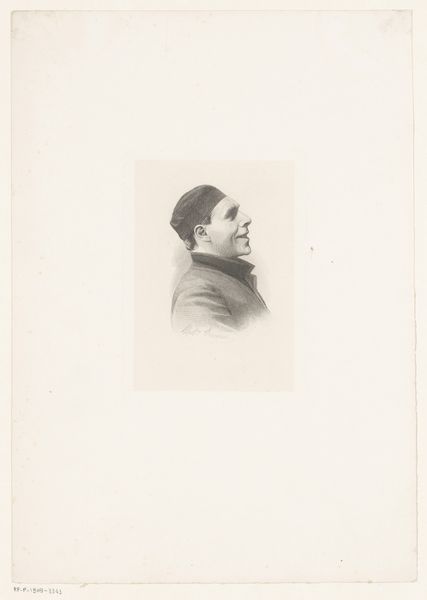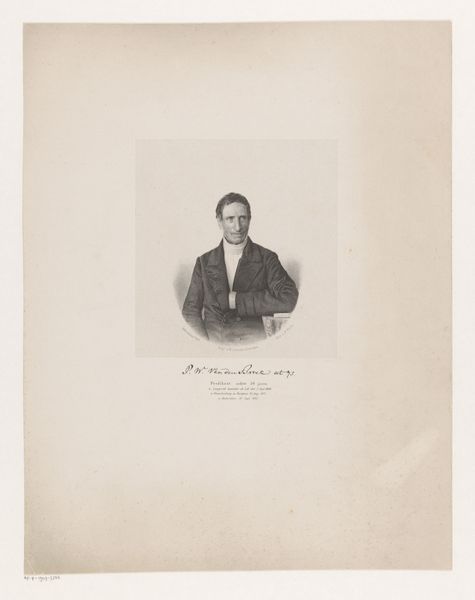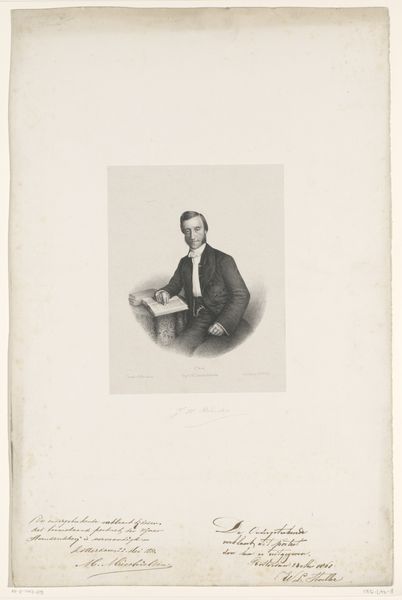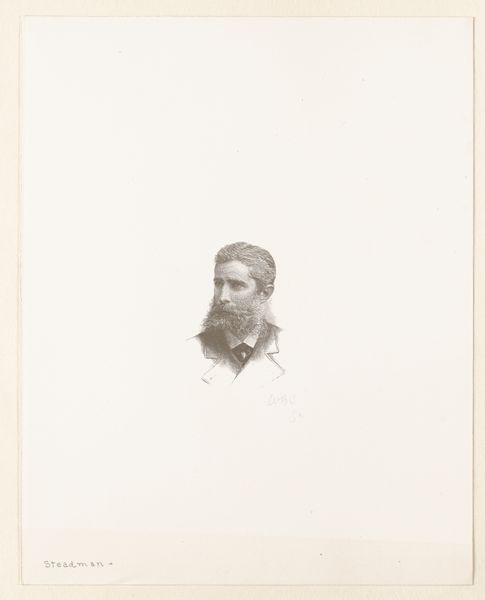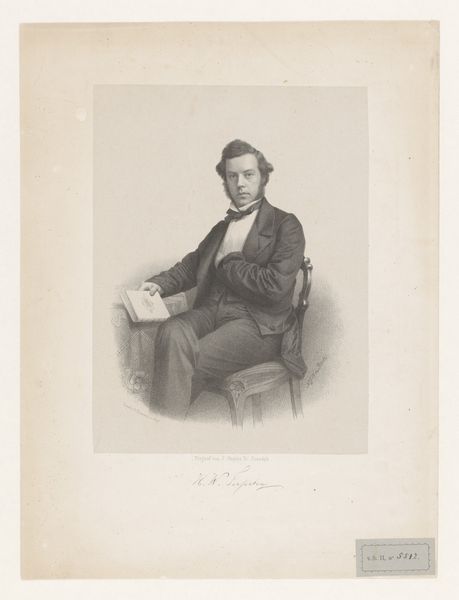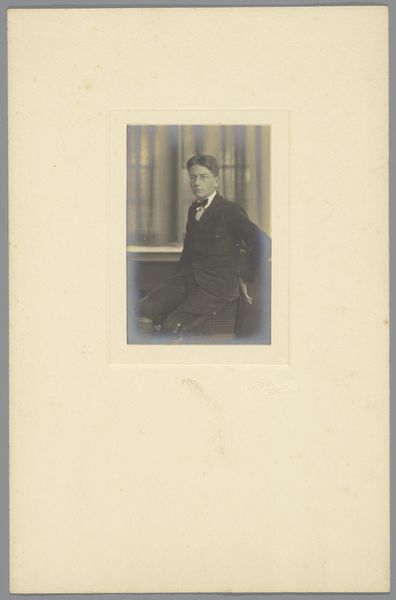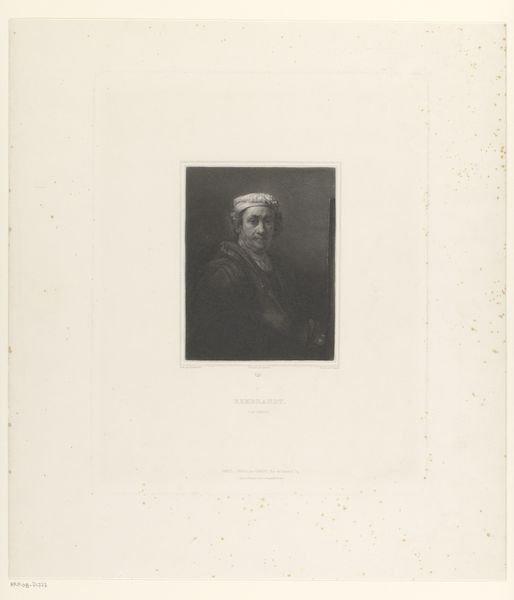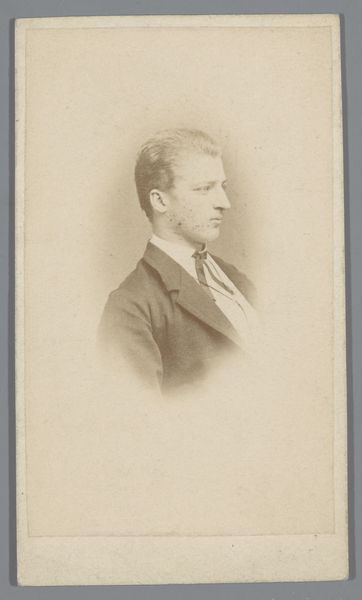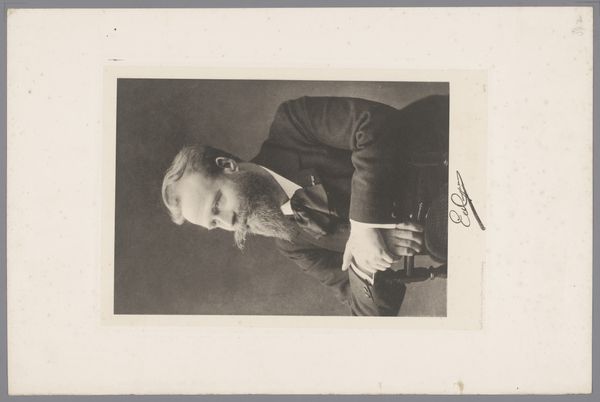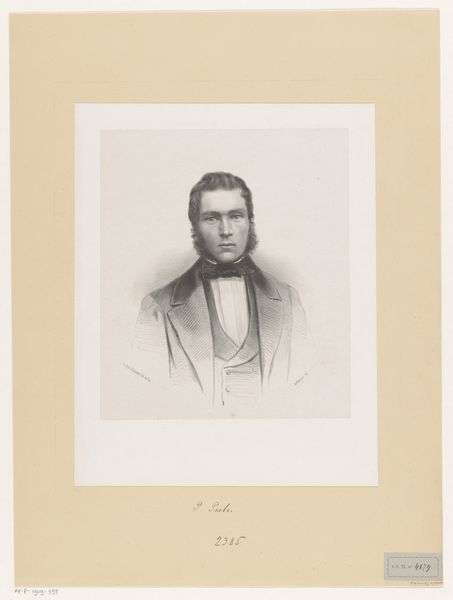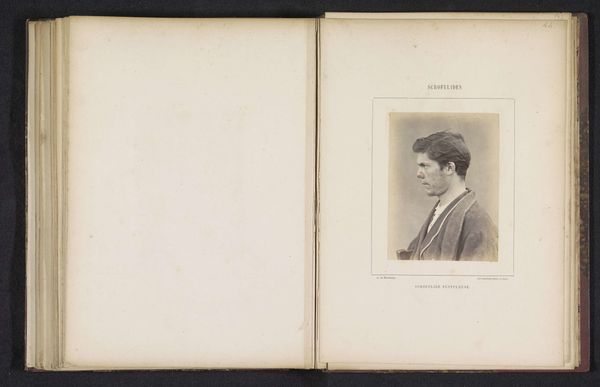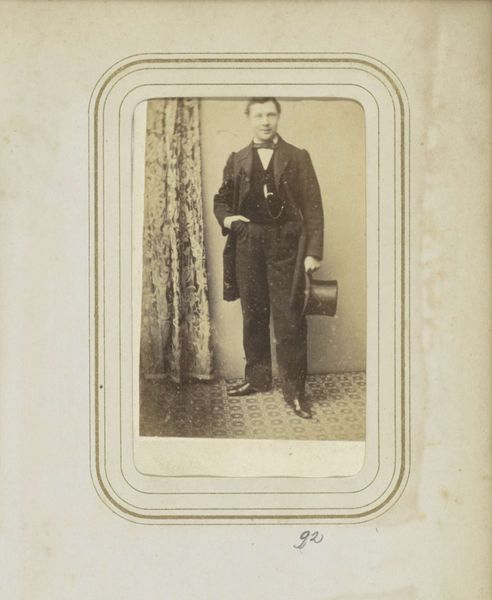
photography, albumen-print
#
portrait
#
photography
#
albumen-print
#
realism
Dimensions: height 150 mm, width 105 mm, height 300 mm, width 208 mm
Copyright: Rijks Museum: Open Domain
Editor: We're looking at a photograph entitled "Portret van de koordirigent Cor Kint," dating from somewhere between 1880 and 1900, currently held in the Rijksmuseum. The albumen print gives the subject an almost ethereal quality. The simple composition places all focus on the individual's features, particularly his striking profile. How do you interpret this work, focusing on its visual structure? Curator: The photograph presents a study in contrasts, literally playing with light and shadow across the subject's face. Note how the sharp definition of the nose and brow line recedes into softer textures defining the cheek and hairline. The relatively narrow tonal range of the albumen print, compared to modern photography, in effect isolates form and structure for scrutiny. Do you notice the careful cropping, where space seems minimized to almost press the image forward? Editor: Yes, I see that! It almost feels like a study on planes, particularly the different surfaces of the face that become almost geometrical because of the lighting. Was this common in portrait photography of this era? Curator: One might argue that the framing is quite deliberate, highlighting the sitter's head as an isolated form. Notice, too, that the image is not perfectly centered. The subtle off-centering enhances the overall compositional balance, inviting our eyes to investigate negative space as a visual component in its own right. Do you agree with that assertion? Editor: That’s a very interesting point. I was so caught up with the figure that I did not register the importance of the seemingly blank parts surrounding it. Thank you, that certainly helps me to think about portraiture with renewed insight into formal structures. Curator: Indeed. Photography, particularly during the late 19th Century, used visual techniques for rendering social stature, much like painting. Viewing the compositional choices allows one to analyze deeper conceptual and artistic meaning beyond that.
Comments
No comments
Be the first to comment and join the conversation on the ultimate creative platform.
